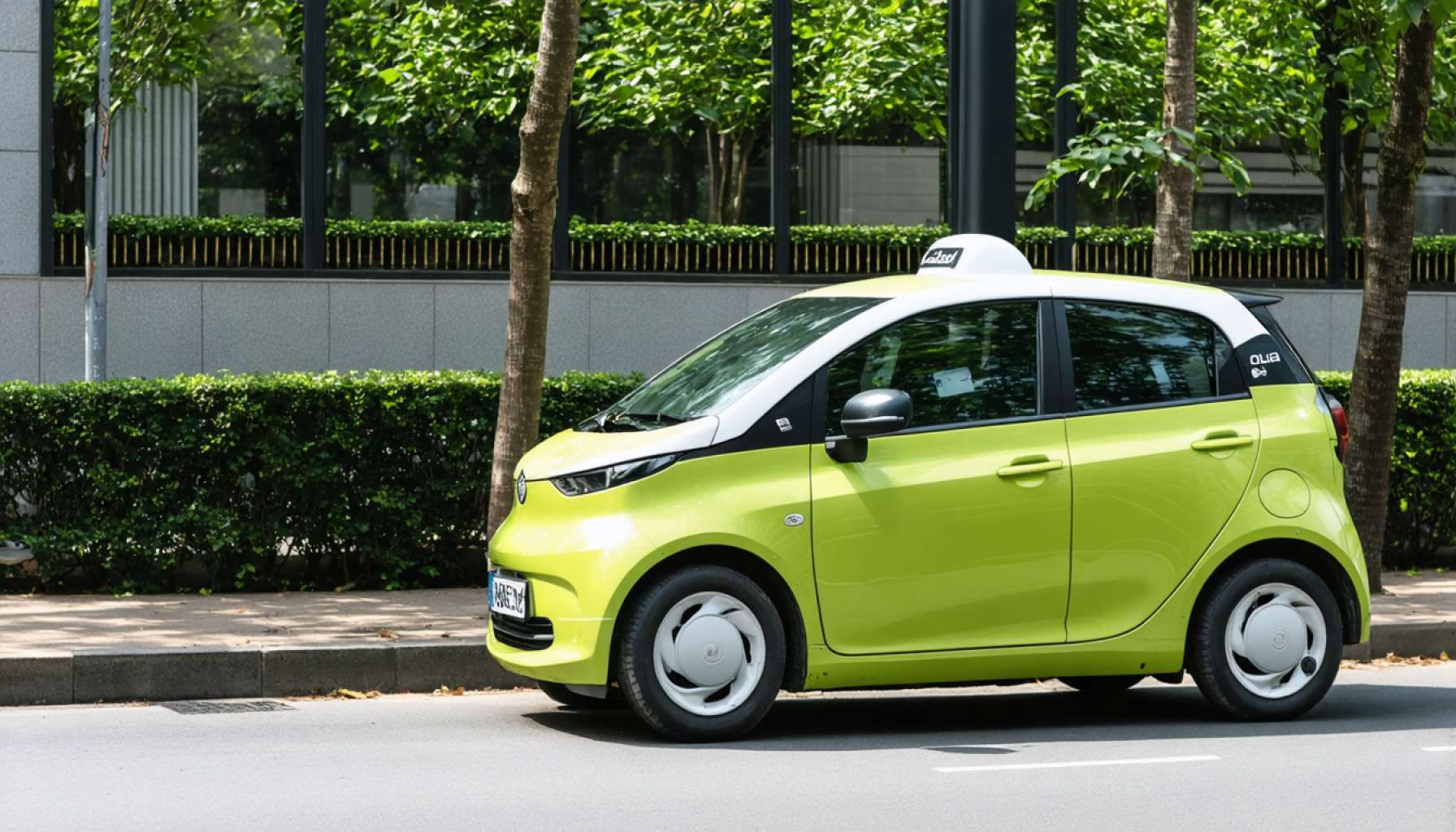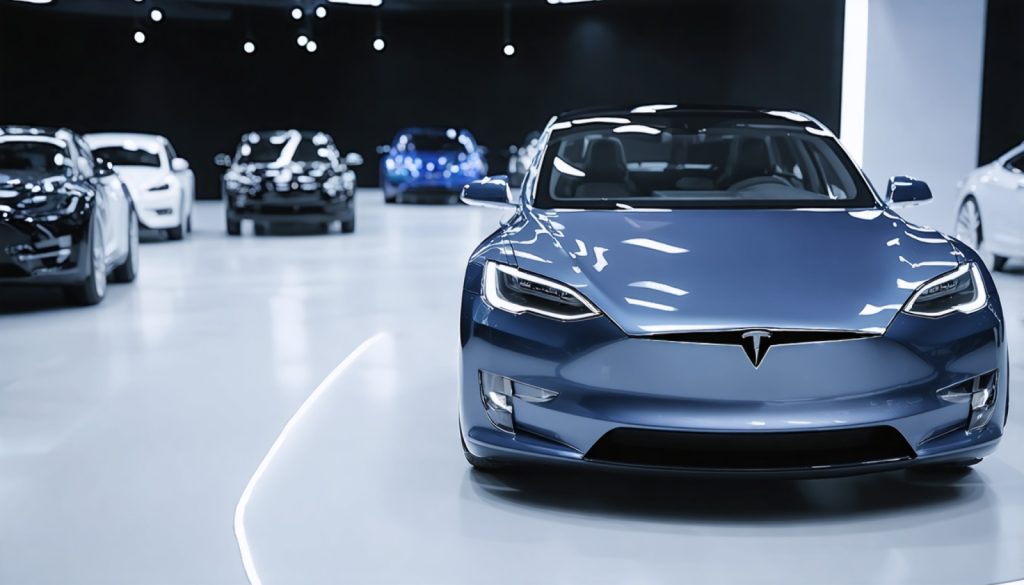- Ola’s aggressive push into the electric vehicle (EV) market has faced numerous challenges, including declining sales, manufacturing issues, and public safety concerns.
- The company’s initial success in the EV space has faltered, impacted by rising competition from more established brands and mounting financial losses.
- Internal issues, including executive exits and rushed product releases, have exacerbated Ola’s struggles; their direct-to-consumer model has led to customer service challenges.
- To rebuild trust, Ola plans to open nearly 4,000 new service centers, although regulatory hurdles complicate this effort.
- Ola’s journey highlights the tension between rapid tech innovation and the demands of manufacturing, emphasizing the need for careful execution.
- The company’s ability to recover and succeed in the EV sector will reflect on India’s broader aspirations in sustainable technology and reduced carbon emissions.
- Ola’s story serves as a cautionary tale about balancing ambition with reliable and safe execution in the fast-evolving realm of electric mobility.
Once celebrated as the trailblazer of India’s burgeoning start-up scene, Ola has hit a patch of rough road in its ambitious journey through the electric vehicle (EV) landscape. Founded in 2010, Ola quickly became a formidable name, capturing market share from global giants like Uber while expanding its umbrella to include ride-hailing, EVs, and even battery manufacturing. Yet, behind this veneer of success, the company is grappling with challenges that could threaten its very foundation.
With marquee investors backing its ambitious plans, Ola set the stage for a dramatic entry into the EV market with a record-breaking IPO last year. Its electric scooter was heralded as a model engineered for India’s burgeoning middle class—an environmentally friendly two-wheeler that promised to reshape urban mobility. However, the aftermath of this spectacular launch has been marred by declining sales, manufacturing mishaps, and public safety concerns. The front-page recognition has turned into a PR nightmare with social media abuzz with customer complaints ranging from immolated scooters to sudden mechanical failures.
It’s a turbulent time for Ola, as competition from better-established brands heats up. Rivals, having smoothly rolled out their own electric offerings, are starting to eclipse Ola in markets they once dominated. From holding more than half of the EV market share, Ola now finds itself struggling to maintain its foothold, a setback amplified by mounting losses and missed performance targets.
Behind the scenes, internal turmoil has only added to the tumult. Executives have exited, partnerships have dissolved, and Ola is grappling with allegations of rushed product releases aimed at meeting unrealistic timelines. These growing pains are further exacerbated by a business model that sidesteps traditional dealerships with direct-to-consumer sales, an approach that has left many customers without adequate support when issues have arisen.
Efforts to rectify these missteps include a commitment to open nearly 4,000 new service centers and to rebuild consumer trust. But even here, the road is fraught with obstacles, as regulatory scrutiny has put Ola in the crosshairs for operating centers without the requisite licenses.
Ola’s narrative reflects the broader challenges faced by fast-growing tech companies attempting to transition into manufacturing—a terrain where patience and precision are key. Critics argue that a tech-oriented mindset with rapid pivots does not translate well to the slower-moving world of hardware development.
Despite these challenges, Ola stands at a critical juncture. The company’s significant efforts in the EV sector align with India’s national push to reduce carbon emissions, bolstered by substantial state subsidies. Ola’s ability to navigate this moment will not only impact its future but also serve as a litmus test for India’s potential as a leader in sustainable technology.
In a world increasingly revolving around the axes of sustainability and technology, Ola’s story is a reminder that ambition must be tempered with execution. As the world watches, Ola must steer back onto a track where innovation doesn’t just inspire—it’s trusted, reliable, and above all, safe. The coming months will tell if Ola can turn its fortunes around, or remain a cautionary tale in the annals of electric mobility.
Ola’s Rocky Road in the EV Sector: Unseen Challenges and Future Directions Revealed
Understanding Ola’s Recent Struggles
Ola, a leading player in India’s booming start-up ecosystem, electrified the market with its ambitious foray into electric vehicles (EVs). Once celebrated for its innovation and market capture, Ola now grapples with significant challenges threatening its stronghold. Here’s a closer examination of the overlooked facets of Ola’s current situation and the broader implications for the EV landscape.
Key Additional Facts and Context
1. Competition Intensification:
– As the EV market flourishes, Ola faces stiff competition from well-established giants like Bajaj and TVS, who have operational experience and a stable consumer base. This intensified competition has made it challenging for Ola to keep up without compromising on quality or customer satisfaction.
2. Internal and External Challenges:
– Internal strife has been compounded by the complexities of transitioning from a tech company to a manufacturing entity. The tech world’s rapid development ethos conflicts with the careful precision required in hardware manufacturing, leading to rushed product releases.
– The choice of a direct-to-consumer sales model, bypassing traditional dealership support, has resulted in inadequate customer service, leading to dissatisfaction and public complaints.
3. Market Trends and Consumer Expectations:
– There’s an increasing demand for sustainable transportation options as global consumers become more environmentally conscious. However, this expectation puts pressure on manufacturers to ensure reliability and sustainability.
– The EV industry’s growth forecasts indicate a strong uptrend, with policies supporting EV adoption in India, but this comes with heightened scrutiny and expectations of safety and performance.
Addressing Ola’s Challenges: Actionable Insights
How-To Navigate Current Challenges:
1. Strengthen Quality Control:
– Ola must focus on refining its manufacturing processes to ensure reliability. This includes establishing a robust quality assurance framework and thorough testing before product launch.
2. Enhance Customer Relations:
– Developing a well-equipped customer service team to handle post-sales issues efficiently can turn customer grievances into brand loyalty. Providing training and resources to service personnel can facilitate better customer support.
3. Strategic Market Positioning:
– Collaborating with experienced industry players for joint solutions and learning from seasoned competitors could help Ola stabilize and enhance its product and service offerings.
4. Aligning with Sustainable Practices:
– By emphasizing eco-friendly practices and innovative sustainable technology, Ola can align more closely with the increasing shift towards green solutions.
Real-World Use Case:
– Tesla, despite its challenges, stood firm by focusing on technological innovation, customer experience, and consistent quality, which Ola can emulate to regain market confidence.
Looking Ahead: Market Predictions and Recommendations
Industry experts predict a robust future for the EV market in India, driven by government initiatives and subsidies. Ola’s role could be pivotal, provided it rectifies present missteps.
Security and Sustainability Initiatives:
– Investing in advanced safety features can transform consumer perception. Additionally, sustainable manufacturing practices will contribute to long-term credibility and market appeal.
Pros and Cons Overview:
– Pros: Forward-thinking, aligns with green policies, potential to transform urban mobility.
– Cons: Operational hurdles, safety concerns, declining consumer trust.
Conclusion: Quick Tips for Ola
– Enhance Transparency: A transparent approach in addressing complaints and communicating actions taken can earn back public trust.
– Progressive Collaborations: Entering partnerships that complement Ola’s strengths can aid in smoother market transitions.
– Focus on Core Strengths: Leverage Ola’s tech-savvy background to introduce innovative and tech-enabled solutions in their EV offerings.
For more insights into similar start-up challenges and opportunities, visit Ola.







